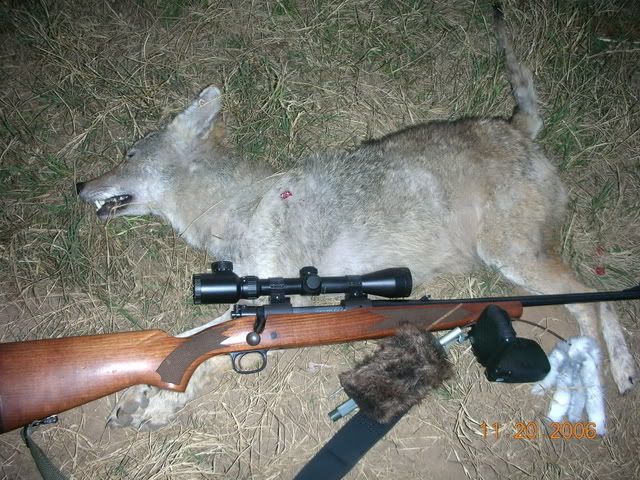There is a lesson to be learned in these posts if one just listens. It does not take that much volume to call in coyotes and foxes, especially if you use the wind instead of fighting it. We should all remember that if you can hear the sound at 50 yds, a coyote can most likely hear it at 1000 yds, as his hearing is at least 20 times better than a human's. Everybody goes by what they can hear, and that really doesn't have anything to do with what the coyote can hear. If you have a caller that shows you the volume you are operating at, and you can trust it, it doesn't matter if you can hear it or not, just so Wylie hears it. If it sounds like it is weak and dying, he will come a with a lot more gusto. This is going to remain a point of "Discussion" as long as there are predator callers, but just ask yourself how many times you have heard workers hundreds of yards away, talking while working on a roof for instance, when the wind was either coming directly from them or quartering from them? Then ask yourself how well you could hear them if the wind was blowing from you to them. If you can set up where your human scent is not going to where the coyotes are, but the sound is at low to moderate volume, you will call more in to see and shoot. You'll call some in with high volume too facing the caller into the wind, but they will usually circle wide making it more likely they will be at long range and hard to stop, and you'll spook as many as you call in, but you don't see the ones you spook. Some of the guys believe the coyote can't distinguish between different levels of volume, but that is horse hockey; he makes a living knowing all about his domain. I have seen Tal Lockwood and Dan Thompson call them in from well over a mile with a mouth call, so why does anyone think an ecaller has to be able to break out windows? In the big majority of cases, what is natural sounding is best. I forgot three major words, "In my opinion".


